Stream, Distribute and Manage Audio Signals over IP Networks with Kramer’s AoIP Solution
What is Kramer Audio over IP?
Kramer Audio over IP (AoIP) is the distribution of digital audio at a certain point of an IP Network which includes the Internet. Its miles getting used increasingly more to provide splendid audio feeds over prolonged distances. The utility is also referred to as Audio Contribution over IP (ACIP) in reference to the programming contributions made by using subject reporters and far off activities. Audio first-class and latency are key problems for contribution links.
The effect of IP on the design of broadcast gadget and infrastructures is profound. Many broadcasters are replacing existing analogue, AES3, MADI and SDI ports with a new magnificence of interface for connecting to traditional IT switch infrastructure, collectively with new manage mechanisms for connection management and tool discovery.
In the system, they’re embracing an emerging set of open standards for interoperable, supplier-impartial sign shipping.
Internet Protocol (IP) technology is changing the broadcast industry in a revolutionary way, sweeping aside traditional approaches that relied on a mass of point-to-point cable connections, each restricted to transporting a given type of media/data between two locations, and in audio terms, limited to a relatively low channel count (typically a maximum of 64). These are being replaced with network connections that allow for higher audio channel counts and the ability to pass different types of media and data over the same connection.
In an IP-based totally operation, a device most effective wishes one connection to a community so that it will ship and get hold of audio and statistics to and from any other device on the network, as opposed to needing an immediate connection with every other tool. Now not simplest is the number of cables hugely decreased, however, the cables themselves are shorter, considering they best want to connect with the nearest transfer, rather than running all the manner to the piece of package they hook up with. Network cables also are cheap and with no trouble available.
Benefits:
The advantage of IP topology is many. As broadcasters replace their present analogue, AES3, MADI and SDI solutions with this new it technology, they leverage preferred IT transfer infrastructure, collectively with new manipulate mechanisms for connection management and device discovery. Within the process, engineers start to embrace a rising set of open standards for interoperable, vendor-neutral signal shipping. As this happens, the conventional differences between audio, video and statistics transports are disappearing and being changed with a single agnostic, scalable network. Gradually, old video and audio cabling is being replaced through networks sporting IP traffic and well known IT switches are taking over the function of traditional audio and video routing equipment.
Next, broadcaster’s objectives will increase past merely replicating current operating practices as self-belief and competence grow, and work-flows will evolve to take gain of the more flexibility and geographical freedom now to be had to them. And longer-time period, the printed industry will similarly borrow from the IT industry by using shifting away from bespoke hardware in the direction of software program-based processing going for walks on commodity computing systems. Broadcast procedures that fit this version will advantage profoundly in terms of both scalability and economy.
Applications:
Kramer Audio over IP can be utilized in various fields as mentioned below:-
- Boardrooms
- Education
- Hospitality
- Airline and rail transportation
- Retail
- Entertainment
- Houses of worship
Different models available in Kramer Audio over IP:
- FC404NET :
4X4 Dante Interface
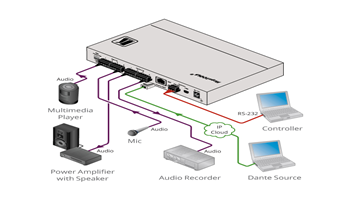
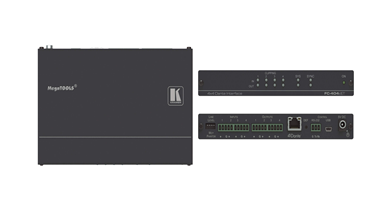
- FC102NET:
2−Channel Dante Encoder & PoE Acceptor
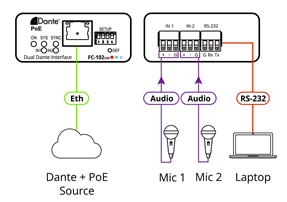
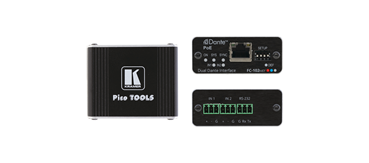
- FC101NET :
2−Channel Dante Decoder & PoE Acceptor
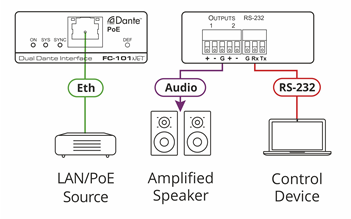
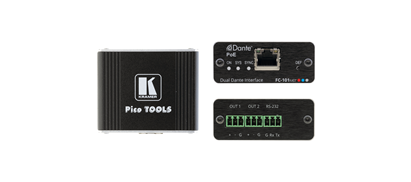
Conclusion:
The IP revolution is well underway, bringing unparalleled possibilities to broadcast operations. We’re headed globally wherein broadcasters shift far from a conventional sign-based technique in want of a services model; where content material, both stay and saved, may be located and accessed by way of all people in possession of access rights and the perfect IP connection, irrespective of location. And now, many of the challenges and obstacles to effective IP signal transport and management are being addressed via breakthroughs consisting of NMOS, bringing plug-and-play simplicity to operations and lowering the reliance on specialised engineers.
There’s plenty of exact news there for audio engineers, and the emergence of key standards will easy the path, but it’s crucial that broadcast engineers advantage eager know-how of AES67 and SMPTE ST 2110 as well as the nuts and bolts of configuring and dealing with IP switches.










